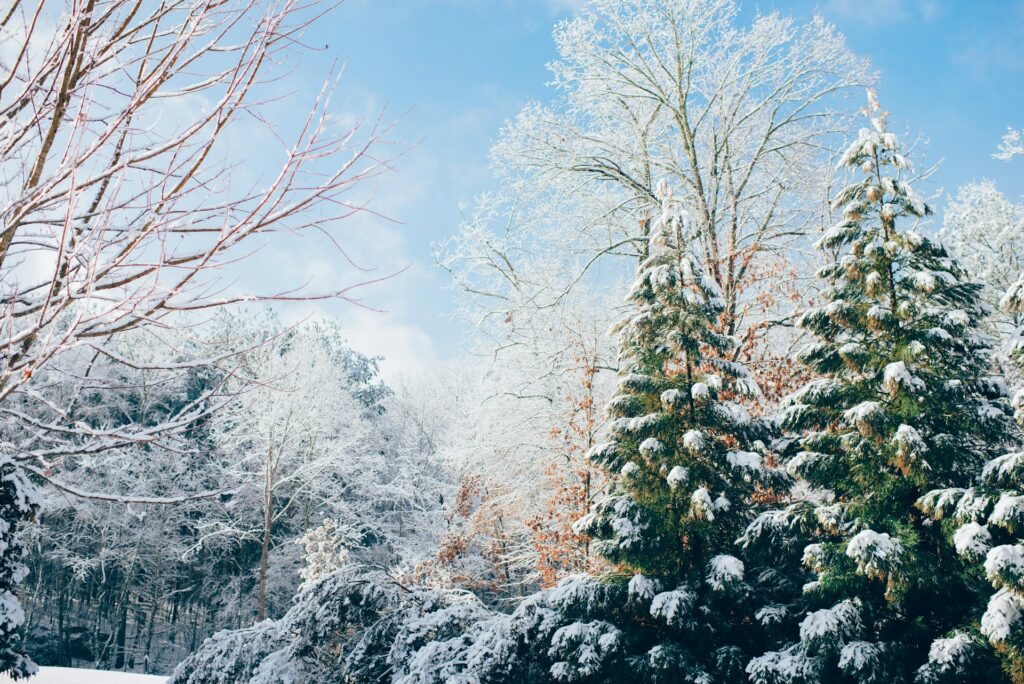
We are reader-supported. When you buy through links on our site, we may earn an affiliate commission.
Gardening is a great way to beautify your landscape and reduce stress. The hard work you put into your plants produces tangible results on both those fronts, along with the bonus of fresh produce.
Plants that grow in winter require some preparation. Here’s how to care for cold-weather vegetation and get the best results.
1. Clean Up Your Garden
The first step is to tidy up your garden because, over time, it can get crowded with wilted vegetation. Consider breaking your garden into sections to make the task quicker. Start by removing any rotten vegetables, which can prevent any disease from carrying over.
You can throw any healthy vegetation into your compost pile. If your plants have mold or mildew, dispose of them with your other household trash.
Next, add a layer of finished compost. Begin by pulling any dead weeds, and then lightly cover the beds with mulch. This helps to suppress any weeds and insulate your soil. Once the ground freezes over, you can add another layer of mulch for your flowers.
2. Get a Soil Test
A soil test will help you determine how much fertilizer to add. This way, you can plan what plants will work best in your spring garden.
A soil test will tell you what levels of the following your soil has:
- pH
- Potassium
- Organic matter
- Lead
If your pH level needs to be adjusted, adding lime can be beneficial. You can perform a squeeze test to determine what type of soil you have. If the dirt holds its shape when squeezed but crumbles when poked, it’s a loamy type. If it stays sturdy, it’s clay, and if it falls apart when you open up your hand, it’s sandy.
3. Plant Cover Crops
Cover crops are ideal plants that grow in winter. Planting items like clover can keep your soil healthy and prevent dirt erosion and weeds. They also break up compacted areas and increase the levels of organic matter. Some types even provide nitrogen for your vegetables.
Here are some additional cover crops to consider adding to your garden:
- Annual ryegrass
- Oats
- Rapeseed
- Winter wheat
- Buckwheat
4. Expand Your Garden
The perfect time to expand your garden is before winter comes. Consider building additional beds on top of your grass so you’re ready to start planting when spring arrives. Fall is a good time for this project because the weather will be warmer.
5. Assess Your Past Growing Season
Take inventory of what plants grow well and which don’t. Consider expanding successful crops and trying different variations. Try to determine the cause of poor performers. Soil fertility, moisture levels, and location are some factors that could have played a role.
Understanding these factors can help you know what needs to be done next time. Keep a list handy, so you can refer to it when planting in the spring.
6. Start Harvesting Your Compost
Composting helps add nutrients into your soil, break down organic material and prevent disease. Fill your compost with leaves, straw or kitchen scraps to keep it insulated over the winter. Place compost bins in sunnier parts of your yard to aid the process.
Here are some additional tips for successful composting:
- Add yard clipping
- Monitor moisture
- Track temperature
- Add worms
- Keep your pile around 3-4 feet on each side
7. Clean Your Tools
Keep your tools clean to ensure they’re always ready to use. They may be worn down from spring use. Wash off the debris and dirt, and sharpen your hoes and shovels with a file. Then use an oiled rag to rub down the surfaces of your supplies. You may also want to disinfect and sanitize your tools to prevent bacteria from spreading.
Tips for Winter Planting
Once you prepare your vegetable garden, follow these tips to keep your plants healthy.
- Keep planting: Continue to add to your garden even in winter. Just find a place soft enough to dig a hole.
- Add compost: Use the compost pile prepared last fall to add nutrients to your soil.
- Use mulch: This maintains a stable temperature for your plants’ roots.
- Water: Keep your plants hydrated before the ground freezes.
- Pay special attention to potted plants: Cover these with frost cloth and move them close to your house.
- Bring in houseplants: Before placing them inside, spray with insecticidal soap and water to eliminate bugs.
When planting, be sure to choose vegetables that can withstand cooler temperatures. Here are some plants that grow in winter to consider including in your garden:
- Asparagus
- Beets
- Broccoli
- Cabbage
- Carrots
Planting Your Winter Garden
Gardening can be a fun way to get outside and reduce stress, and winter is the perfect time to start preparing your garden for spring. Consider these tips to make your winter garden a success.










